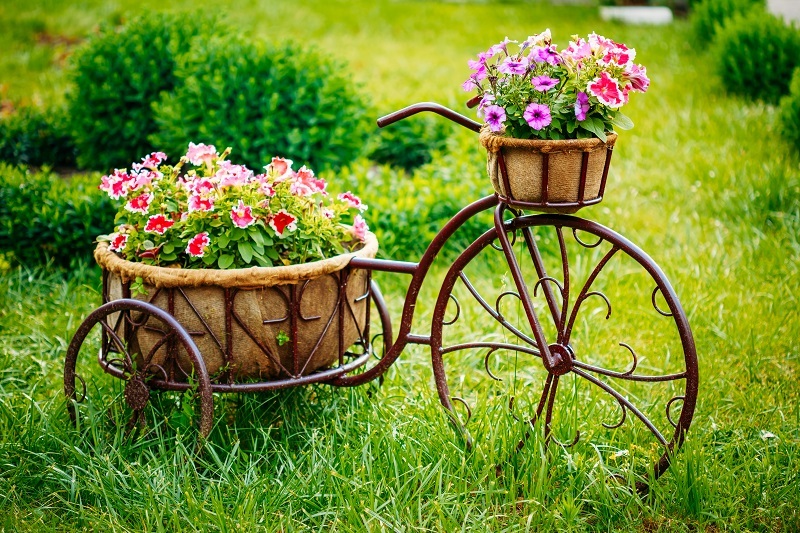Enhancing Poinsettias' Durability
Posted on 01/07/2025
Poinsettias (Euphorbia pulcherrima), with their vibrant red, white, or pink bracts, have become a cherished symbol of the holiday season. While their festive appeal is undeniable, many plant enthusiasts and homeowners struggle with extending poinsettias' lifespan. Maximizing poinsettias' durability involves a deep understanding of their care requirements, as well as practical strategies to minimize stress and environmental threats. This comprehensive guide delves into proven methods for improving poinsettias' longevity, ensuring your holiday centerpiece remains healthy and vibrant well beyond the festivities.
Understanding Poinsettias' Natural Biology
To effectively enhance poinsettias' toughness and resilience, it's essential to understand their origins and growth patterns. Native to Mexico and Central America, poinsettias thrive in mild, subtropical climates. Their bright displays are not true flowers, but colored leaves, known as bracts. The actual flowers are small, yellow structures at the center of each cluster.
- Poinsettias are photoperiodic plants: They require specific amounts of light and darkness to initiate blooming and bract coloration.
- Temperature-sensitive: They are highly sensitive to sudden temperature changes and drafts.
- Susceptible to root rot and pests: Proper watering and pest control are crucial for maintaining poinsettia health.
Why Do Poinsettias Deteriorate Quickly?
Many believe poinsettias are delicate or "disposable" houseplants, but this reputation often stems from improper care. Factors that commonly reduce poinsettias' durability include:
- Exposure to cold temperatures during transport or display
- Irregular watering (over or under watering)
- Improper light conditions
- Lack of humidity
- Poor soil drainage
- Neglecting post-holiday care
Fortunately, enhancing poinsettias' durability is possible with informed attention to environmental conditions and maintenance practices.

Essential Tips for Improving Poinsettias' Longevity
1. Selecting a Healthy Poinsettia
The journey to superior poinsettia durability begins at purchase. Here are key considerations:
- Inspect the plant: Choose poinsettias with dark green foliage and well-colored, intact bracts. Avoid plants with wilted leaves or signs of pests.
- Check for yellow or dropping leaves: These may indicate root issues or previous exposure to temperature stress.
- Look at the soil: It should be moist but not soggy. Dry or waterlogged soil is a red flag.
- Evaluate packaging: Ensure the poinsettia is wrapped adequately during transport, especially in cold weather, to avoid chilling damage.
2. Ideal Placement: Light, Temperature, and Humidity
Positioning your poinsettia properly is fundamental to maximizing its lifespan.
- Light: Place your poinsettia near a bright window, but avoid direct sunlight, which can scorch the leaves. Filtered light or morning sun is ideal.
- Temperature: Maintain indoor temperatures between 65-75?F (18-24?C) during the day, dropping no lower than 60?F (15?C) at night.
- Humidity: Poinsettias prefer 50-60% humidity. Use a humidifier or place a water-filled tray with pebbles near the plant.
- Protection from drafts: Avoid placing poinsettias near doors, fireplaces, or heat vents, which can cause rapid leaf drop.
3. Watering: The Key to Extended Poinsettia Health
Both overwatering and underwatering reduce poinsettias' resilience. The right watering routine is crucial:
- Soil moisture: Water only when the top inch of the soil feels dry. Insert your finger to test before watering.
- Drainage: Ensure pots have drainage holes. Never allow the plant to sit in standing water.
- Water temperature: Use room-temperature water to avoid shocking the roots.
- Avoid misting bracts: Directly wetting the colorful bracts may cause spotting or fungal issues. Water only the soil.
Pro Tip: Remove any decorative foil from the bottom of your poinsettia's pot or punch holes in it, to prevent root rot from trapped water.
4. Fertilization: Supporting Lasting Growth
To further boost poinsettias' vitality post-bloom, a proper feeding schedule helps develop strong foliage and root systems:
- Timing: Skip fertilizer while the plant is in bloom, typically during the holiday season.
- Post-bloom: After the holidays (usually in late winter or early spring), use a balanced, water-soluble fertilizer every 3-4 weeks.
- Instructions: Dilute fertilizer to half the recommended strength to avoid burning sensitive roots.
5. Pruning for Strength and Shape
Strategic pruning not only shapes your poinsettia, but also stimulates bushier growth and long-term durability:
- Prune in early spring: Cut back stems to 4-6 inches above the soil height, removing faded bracts and any damaged foliage.
- Encourage branching: Pinch new shoots periodically to promote a fuller, healthier appearance.
6. Repotting: Refreshing the Environment
If you intend to keep your plant for another season, repotting is vital for prolonging poinsettias' vigor. Follow these steps:
- Wait until after blooming: Repot in late spring or early summer.
- Choose the right soil: Opt for a lightweight, well-draining potting mix. Amend soil with perlite or sand if needed.
- Increase pot size : Select a container only slightly larger than the current one to avoid water retention problems.
7. Disease and Pest Prevention
Sustaining the durability of poinsettias also means minimizing the risk posed by pests and diseases. Common threats include whiteflies, aphids, fungus gnats, and root rot fungi.
- Practice good hygiene: Regularly remove leaf debris and avoid overcrowding plants.
- Inspect regularly: Check the undersides of leaves for insects and sticky residue. Early removal or treatment is key.
- Natural remedies: Use insecticidal soap or neem oil for minor infestations. Always test a small area before application.
Advanced Strategies for Extending Poinsettias' Durability
Environmental Control: Creating an Optimal Microclimate
If you are committed to making poinsettias last longer, consider creating an optimal microclimate indoors:
- Consistent temperatures: Avoid frequent changes that can shock your plant.
- Humidity trays: Place trays filled with water and pebbles under or near pots to increase local humidity without overwatering the roots.
- Grow lights: During winter's reduced daylight hours, supplement with LED grow lights for 12-14 hours daily to sustain growth and color.
Encouraging Rebloom: Year-Round Longevity
For the adventurous, it is possible to rebloom your poinsettia and enjoy its beauty for multiple holiday seasons. This process requires patience and strict light management.
- Spring (March-April): After bracts fade, prune hard as described above. Continue moderate watering and regular fertilizing.
- Summer (May-August): Move the plant outdoors in partial shade, gradually increasing sunlight exposure. Maintain watering and feeding.
- Fall (September): Bring the plant indoors before nighttime temperatures dip below 55?F (13?C).
- Initiate darkness treatment: Starting in late September or October, provide total darkness for 14-16 hours every night, using a cardboard box or closet. During the day, place in bright, indirect light. Repeat nightly for 8-10 weeks to trigger bract coloration.
- Return to normal light: Once bracts begin to color in November or December, restore regular care to enjoy the blooms throughout the holiday season.
Debunking Common Myths About Poinsettia Durability
- Myth: Poinsettias are poisonous.
Fact: Poinsettias are not toxic to humans or pets, although they may cause mild digestive upset if ingested in large quantities. - Myth: Poinsettias only last a few weeks.
Fact: With proper care, poinsettias can thrive and even rebloom for years. - Myth: They need constant sunlight.
Fact: Poinsettias prefer bright, indirect light and can suffer from direct afternoon sun.

Poinsettia Care Checklist: Boosting Durability
- Select healthy plants: Inspect leaves, bracts, and soil before purchase.
- Provide optimal light and temperature: Avoid drafts and heat sources.
- Follow consistent watering routines: Only water when the topsoil is dry.
- Fertilize appropriately: Only after blooming and at reduced strength.
- Prune in spring: Foster robust, bushy new growth.
- Repot as needed: Use fresh soil and an appropriately sized container.
- Monitor pests and diseases: Intervene early to prevent damage.
- Consider advanced techniques: For reblooming, follow strict dark treatment protocols each fall.
Conclusion: Enjoying Vibrant Poinsettias Year-Round
Enhancing poinsettias' durability is not only rewarding aesthetically, but also a testament to careful, attentive gardening. With a blend of science and tradition, anyone can maintain, and even multiply, the seasonal joy that this festive plant brings. By following these detailed care tips and advanced strategies, your poinsettias will continue to thrive, bringing color and life to your home through many holidays yet to come.
Remember: Consistency, observation, and preventive care are your keys to making poinsettias last. Whether you're a novice or an expert gardener, the lasting allure of a healthy, resilient poinsettia is well within reach.
Latest Posts
Unlock 3 Handy Hacks to Preserve Your Flowers
The charm and symbolism of birth month flowers and their meanings
Enhancing Poinsettias' Durability







